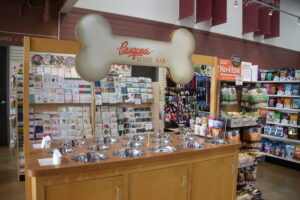Loyalty Program Demographics Survey Released
The loyalty marketing consultancy and publisher COLLOQUY recently published a demographic research report identifying loyalty trends among U.S. market segments. There were 500 completed interviews from each of the six consumer segments, totaling 3,000 interviews used in the results. Questions focused on financial services, travel and retail. The consumer groups were: General Adult (control group); Affluent, heads of households with annual incomes of $125,000 or greater; Young Adults, 18-25 years old; Seniors, aged 60 or older; Core Women, female respondents aged 25-59 with annual incomes between $50,000 and $125,000; Emerging Hispanic, aged 21 or older of Hispanic origin with a household income of $40,000 or less.
The survey found that a high percentage of Young Adults and middle-income Hispanics identify themselves as loyalty program participants. The highest level of loyalty involvement was with the Affluent, with an 80-percent participation rate.
Consumers are more “me” oriented when they look for redemption from participation in loyalty programs. This contrasts with the media drive for the charity rewards of loyalty programs. Nine out of 10 redeemers reported themselves as the primary beneficiary of their redemption events.
There is a marked gap between consumers’ desire for special access and member-only privileges associated with loyalty offers and the delivery of these “soft benefits” by loyalty program operators. Seventy-three percent of Hispanics rated “soft benefits” as extremely important, yet only 17 percent could confirm their delivery. For women in the survey, the corresponding numbers were 64 percent versus 14 percent. This shows that the benefits are either absent or invisible to consumers. Only 47 percent of seniors in the survey marked preferential treatment as important.
About 67 percent of consumers said that they are very likely to keep shopping at a retailer as a result of the retailer’s loyalty program. The survey also showed that Hispanics and Young Adults were very eager for electronic information; however, Young Adults did not respond well to e-communications or traditional communications channels for information about loyalty programs. Women showed a lower engagement in communication forms, probably due to a general lack of time. Women and Young Adults were the least satisfied with the value they received from travel-related reward programs.
This data is very important to the retail industry as it can help brand marketers to better differentiate their products and combat consumer fatigue. This report is presented in a white paper titled “Segment Talk: The Difference Engine – A Comparison of Loyalty Marketing Perceptions Among Specific U.S. Consumer Segments.” It is available free of charge at www.colloquy.com/whitepapers.


















 Videos
Videos





